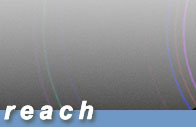2. Business Idea
3. Cost & Income
4. Business Proposal
5. Monitor Progress
Graduation!

Session 3: Cost & Income Forecasting
Cost & Income Forecasting
Why forecast?
Forecasting is where you will determine and organize the financial information for your business, showing costs and revenues. The forecasts become your budget. There is nothing mysterious about forecasting - it is a thoughtful process of thinking about each part of the business operation and determining what kinds of expenses will be generated by these activities.
For your part-time self-employment venture, your costs will normally be limited to the actual activities of making products or providing your services. If you were operating on a larger scale, you would have rent, phone, electricity and other overhead costs to plan for as well.
Even though your costs for your part-time venture may be limited, they are still very real, and your failure to understand and plan for them may result in your losing money instead of generating the additional income you desire.
| The Forecasting Model | |
| Revenue | How Much / What Source(s) |
| Expenses | How Much / What Source(s) |
| Profit (Loss) | Revenue minus Expense |
As you start to build your forecast, think about your hopes and plans for the next 12 months.
- How much do you want to make?
- How much do you want to work? (or, How much can you work?)
-
Is your business idea seasonal?
- Due to the weather? Tourism? Other factors?
- To fill-in around your other seasonal work?
There is a worksheet available online that will help you to understand how much business you will need to do to result in the target amount you want to make. Use the Revenue/Unit Forcasting Model to help understand these relationships.
The first place to start is with your costs. Strange as it may seem, many hobby or craft-based businesses don't have the faintest idea of their costs and so don't have the faintest idea of what they should charge. As a result, they are very likely to price their product or service too low and so loose money with every sale!
You need to think your way through the process.
If you were getting ready to bake a cake and were using a good recipe, you would be provided with a list of required items: mixing bowls, measuring scoops, pans, an oven, and other such items. You also would have a list of the actual ingredients and how much of each you need.
Earlier when we used whirligigs as an example of a part-time business, we noted that you might think that the pattern of your whirligig is the recipe - true, but only part of the recipe. You need to make a list of the rest as well:
- Equipment needed - saw, blades, paint brushes
- Minimum supply inventories - wood, paint (how much of what)
- Space for production and to store inventory
Next, you need to establish your costs. How much does it actually cost to make one whirligig? Here you have to consider waste as well as the actual material you use directly. If you buy a sheet of plywood, how many parts can you cut out of it? The price of that part is the cost of the whole sheet divided by the number of parts it can provide. This is true as long as you don't make any mistakes.
In the language of the trade, the list of parts is called the "Bill of Materials." Any manufacturing company would have a Bill of Materials for each item they produce. The Bill of Materials also includes the cost of each of the parts or other supply items, and may include information about where to purchase that item.
|
Whirligig Bill of Materials |
|
| Wood | $ 9.80 |
| Paint | $ 2.25 |
| Sandpaper | $ 1.00 |
| Bolts and washers | $ .80 |
| Support rod | $ 1.15 |
| Total Cost | $15.00 |
Think about the Bill of Materials for your own product. Use the form at the end of this section to enter your own data.
- Revenue/Expense Forecast
- Revenue/Expense Worksheet
- Forecasting Breakeven
- Annual Forcasting Model
- Uses and Sources of Funds
Now - on to 3a: Revenue/Expense Forecast








